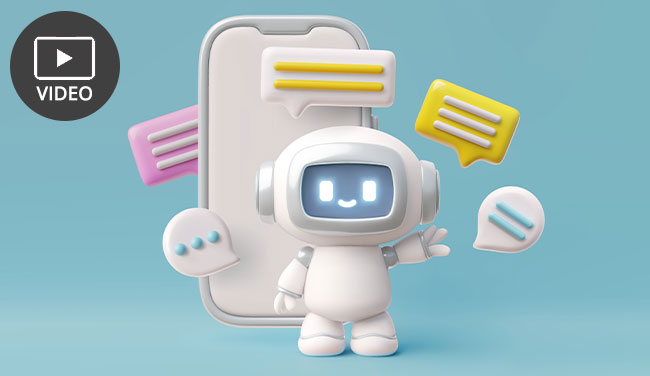19th September 2025

As contact centres continue to search for ways to improve efficiency while delivering great customer experiences, chatbots have emerged as a key solution.
Their growing adoption is no accident, it’s driven by both economic benefits and evolving customer expectations.
To find out more, we asked Jonathan “Kenu” Escobedo, Customer Success Manager at Miarec, to explain why chatbot use is on the rise, the challenges that still exist, and how contact centres can get the most out of their chatbot investment.
Watch the video below to hear Jonathan explain why chatbots are growing in popularity:
With thanks to Jonathan “Kenu” Escobedo, Customer Success Manager at Miarec, for contributing to this video.
This video was originally published in our article ‘Are Chatbots the Tech We All Love to Hate?’
Chatbots offer significant cost-reduction opportunities, as Jonathan explains:
“They offer significant cost savings by reducing the need for human agents, allowing businesses to allocate their resources more effectively. In fact, a study done by TDO found that chatbots can reduce support costs by up to 30%.”
By automating routine enquiries, companies reduce their reliance on live agents and free up resources for more complex tasks.
Unlike human agents, chatbots don’t need breaks. They offer around-the-clock support, giving customers instant answers regardless of time zone or business hours.
“Chatbots provide 24/7 availability, ensuring customers receive instant support without having to be placed on hold or wait for a response. Customers even prefer to try out a chatbot to see if they’re able to resolve their issues before reaching out to an agent.”
This reduces wait times and improves customer satisfaction.
Customers increasingly prefer to try resolving issues themselves before contacting an agent.
A well-designed chatbot gives them that option, making the experience faster and more convenient.
Thanks to ongoing improvements in artificial intelligence and natural language processing, chatbot interactions are now more fluid, intuitive, and human-like.
“Advancements in AI and natural language processing have also enhanced chatbot capabilities, making interactions more seamless and intuitive.”
This makes it easier for customers to engage with bots and get the help they need without feeling like they’re talking to a machine.
Chatbots excel at managing high volumes of repetitive queries, allowing human agents to focus on higher-value, more complex interactions. This improves overall team productivity and elevates service quality.
“Additionally, chatbots excel at handling high-volume, repetitive enquiries, freeing up human agents to focus on more complex and high-value interactions.
As businesses continue to prioritize efficiency and customer experience, chatbot adoption is expected to keep rising.”
Despite their many benefits, chatbots still come with a few hurdles:
“They can struggle with understanding complex or nuanced questions, sometimes leading to ineffective interactions and customer frustration.
Without sentiment analysis, chatbots may also miss sarcasm, frustration, or subtle emotional cues, which can make them seem rude or even inconsiderate.”
Chatbots can struggle to interpret complicated queries or respond appropriately when the language is vague or emotional.
Without sentiment analysis, bots may miss sarcasm, frustration, or urgency, potentially leading to interactions that feel robotic, rude, or dismissive.
When a chatbot fails to escalate at the right moment, the result can be longer resolution times and increased customer frustration.
To ensure chatbots are a positive addition to the customer experience, contact centres should adopt a proactive, data-driven approach:
“First, regularly monitor, update, and train chatbots based on real customer interactions to improve accuracy and effectiveness.”
Regularly monitor and update chatbots using real customer interactions. This helps improve response accuracy and ensures bots stay aligned with evolving customer needs and product updates.
“Second, invest in AI-powered chatbots with advanced NLP, sentiment analysis, and machine learning to create more human-like interactions that adjust to a customer’s tone and sentiment.”
Leverage AI-powered chatbots equipped with:
These enhancements allow bots to adapt their tone, respond appropriately to customer emotions, and hold more natural conversations.
“And third, implement hybrid models that seamlessly escalate complex issues to human agents, when needed, ensuring a smoother customer experience.”
Implement seamless hand-offs to live agents when a chatbot hits its limits. This hybrid model ensures that complex or sensitive queries get human attention, without interrupting the overall experience.
Reviewed by: Xander Freeman